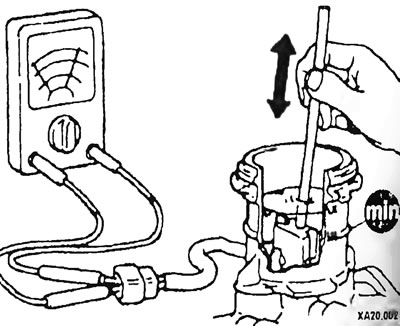At the same time, brake fluid also has one very unpleasant property, it very readily absorbs water, that is, it is hygroscopic. And moisture can actually, for example, from the air, enter the brake fluid through microscopic leaks in the reservoir, brake hoses and rubber cuffs. This trapped water leads not only to corrosion of the metal parts of the system, but also to a significant decrease in the boiling point. With only 2.5% water content, the boiling point is already only 150°C.
This is dangerous when the brakes are heavily loaded, because. at the same time, they are very strongly heated by poison with heated brakes in the brake fluid, vapor bubbles are formed, which can be compressed. The brake pedal increases its travel and falls deeper, and sometimes completely. In such cases, you can correct the situation by quickly swinging the pedal. This effect is especially dangerous after the car is parked after a heavy load on the brakes. If there is insufficient airflow, the area around the brakes heats up even more, the high temperature persists for about 15 minutes after stopping, and only after about 30 minutes is the normal temperature of the brake fluid restored. To prevent these effects, it is prescribed to replace the brake fluid every 2 years.
Brake fluid must meet DOT3 or DOT4 specifications. All fluids with these designations can be safely mixed.
Checking the brake fluid level
The brake fluid level in the reservoir must not fall below the lower MIN·mark, otherwise a leak in the hydraulic system can be assumed. Too low fluid level in the tank causes the control lamp on the instrument panel to light up. The contact is closed by a float in the reservoir, which moves downwards when the amount of brake fluid decreases, but visual inspection should not be neglected.
Checking the brake fluid level sensor
Open the hood and wipe the brake fluid reservoir with a clean cloth.
In a transparent tank, the fluid level should be between the MIN and MAX marks.

While pressing the float of the brake fluid level sensor, check the condition of the circuit between the sensor terminals.
The sensor is healthy if the following conditions are met: when the float is above the mark «MIN» - the circuit is open and when lower - the circuit is closed.
Checking the brake system for leaks and damage
To check, it is necessary to dry the bottom of the car to make it easier to fix leaks. Brake fluid drains under the dirt. Damp, dark spots or black dirt may indicate a leak.
Check all joints and joints, as well as the calipers and the brake shield, behind which are the wheel brake cylinders.
Brake hoses must not be wet, oily or chafed. If this is the case, the hoses must be replaced.
The brake pipes are coated for rust protection. If this protective layer is damaged, it can lead to rust formation. Therefore, the tubes must not be cleaned with a screwdriver, emery cloth or wire brush, and only with chemical means.
If the protective layer is damaged it is necessary to apply thin layers of anti-corrosion primer.
Tubes that are rusty or compressed should be replaced.
Check if there are protective caps on all valves to remove air? They are located on the brake calipers or inside the brake shields.
The pressure test of the brakes can be done by yourself.
Depress the brake pedal with full force.
The pedal after several minutes of pressing should not weaken - otherwise there is a defect in the cuff of the main brake cylinder.
Loose spots on the piston cups can only be detected by a thorough inspection in the workshop.
Brake fluid replacement.
The need to change the brake fluid is caused not only by the already described formation of vapor bubbles, but also by the possibility of corrosion in the brake cylinders and pipelines due to the absorption of water. When changing the fluid, the operations are similar to those for removing air from the system. Requires 0.6 liters of fresh fluid.
If possible, empty the brake fluid reservoir with a syringe or a rubber bulb.
Place tubing on all four bleed valves, dip the other ends of the tubing into suitable containers, and open all four bleed valves.
Have an assistant pump the pedal until the fluid stops coming out. Close the valves, fill the system with clean brake fluid, and then bleed the system (see below).
